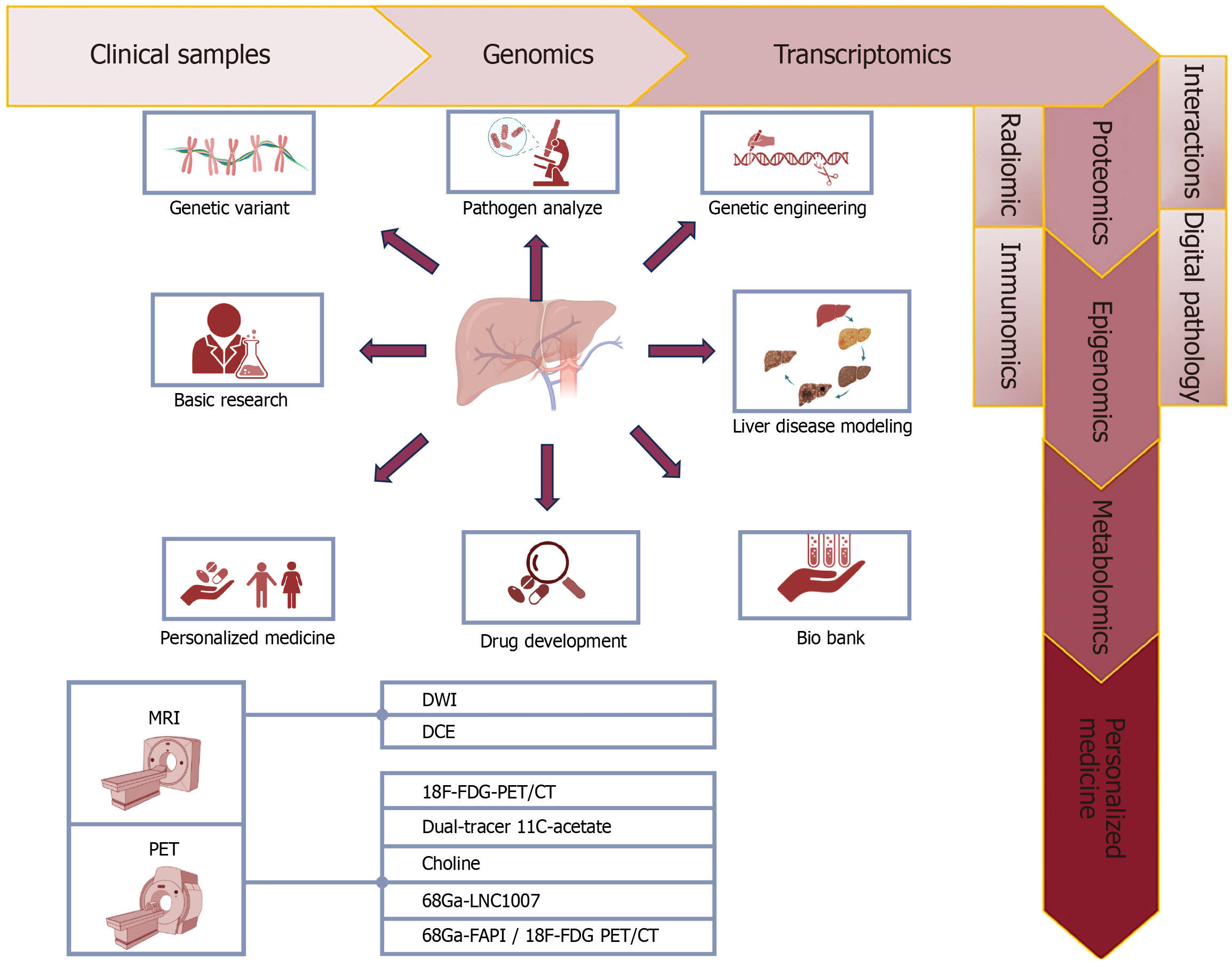Copyright
©The Author(s) 2024.
World J Methodol. Dec 20, 2024; 14(4): 93461
Published online Dec 20, 2024. doi: 10.5662/wjm.v14.i4.93461
Published online Dec 20, 2024. doi: 10.5662/wjm.v14.i4.93461
Figure 2 Role of personalized medicine and molecular imaging in liver cancers.
The main diagnostic and treatment modalities for liver cancer include positron emission tomography (PET) and magnetic resonance imaging, which are specific types of PET modalities including types bound with 18F-F-fluorodeoxyglucose, 11C-acetate, Choline, and types combined with Ga such as fibroblast activation protein inhibitor. The diagram with arrows shows the general progress and considerations made based on genetic, molecular, immunohistochemistry, microscopy, examination of pathogens at the cellular and molecular level, and background information of patients suffering from various types of liver cancer, which ultimately lead to adopting the best and most accurate and most appropriate and personalized solution available. In fact, in the pre-screening stage, collecting patient information, examining samples, and taking images to diagnose and adopt the most appropriate laboratory and imaging methods, as well as the most appropriate and personalized treatment method including medical treatment (drugs, dose, and type of drug), radiation therapy, non-intervention includes all types of surgeries on liver cancer patients according to different types of liver cancer including hepatocellular carcinoma, cholangiocarcinoma, and angiosarcoma. MRI: Magnetic resonance imaging; PET: Positron emission tomography; CT: Computed tomography; FDG: F-fluorodeoxyglucose; DCE: Dynamic contrast-enhanced imaging; DWI: Diffusion-weighted.
- Citation: Fathi M, Taher HJ, Al-Rubiae SJ, Yaghoobpoor S, Bahrami A, Eshraghi R, Sadri H, Asadi Anar M, Gholamrezanezhad A. Role of molecular imaging in prognosis, diagnosis, and treatment of gastrointestinal cancers: An update on new therapeutic methods. World J Methodol 2024; 14(4): 93461
- URL: https://www.wjgnet.com/2222-0682/full/v14/i4/93461.htm
- DOI: https://dx.doi.org/10.5662/wjm.v14.i4.93461









